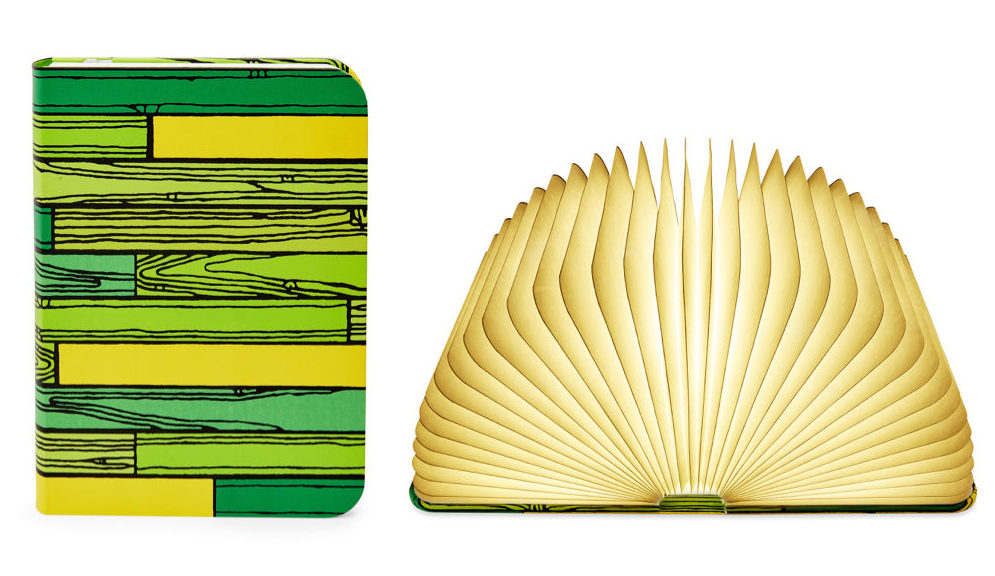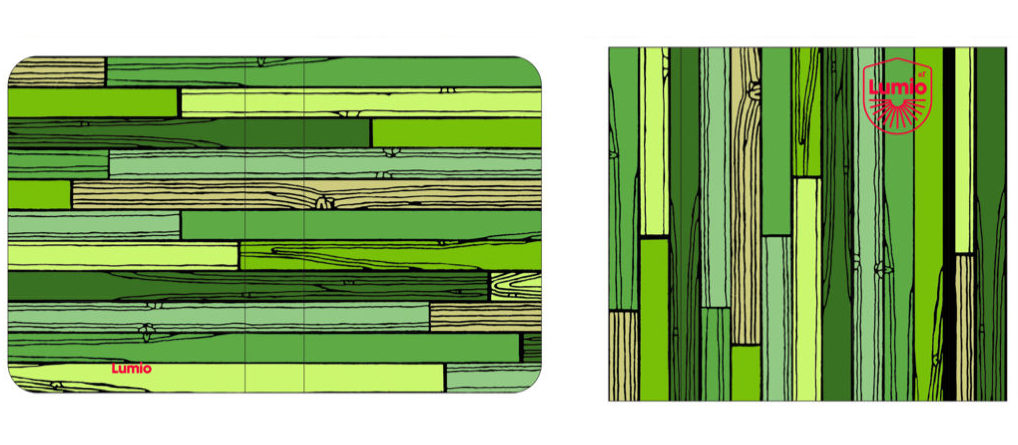British artist Richard Woods—best-known for his cartoonish, candy-colored depictions of a hardwood floor—has long been interested in blurring the boundary between object and image. “There’s always a kind of separation between the two,” he told me from his London studio. “I am interested in [making] work where the object and image do a little dance, so you’re not quite sure where one starts and the other ends.”
A similar kind of ambiguity defines the Lumio lamp, a portable fixture that masquerades as a hardcover book, revealing warm, off-white light as it unfolds to 360 degrees. Designed by architect Max Gunawan in 2013, the fixture won multiple awards (including a Red Dot Product Design Award in 2015) and was scooped up by MoMA’s Design Store, which tapped Woods, whose work is part of MoMA’s permanent collection, to create an exclusive edition of it. Smitten with the notion of taking the Lumio and a favorite paperback on a walk through the forest, the artist began experimenting with a tree-inspired color palette on his signature woodblock pattern. The resulting Lumio, wrapped in a lime- and kelly-green motif, is now available in a limited run of 1,000 exclusively at the MoMA Design Store.
Woods’s cheeky appropriation of materials (including stone, duck canvas, and Tudor Revival–inspired wood beams) stems from a previous life when Woods worked as a carpenter, laying hardwood floors. Sitting in his art studio at night, he found that his day job’s objective stuck in his mind. “I wanted to make a wood floor of my own,” he says. Using the wood as graphic material, he began covering wood floors with his illustration of a wood floor, and brick facades with his illustration of brick facades. He’s since made countless architectural interventions, like giving a New York residence a mock-Tudor overhaul, outfitting the interior of Comme des Garçons’s Osaka flagship, and collaborating with Sebastian Wrong on a series of furniture for Established & Sons.
Earlier this fall, Woods was commissioned by England’s Folkestone Triennial to create “Holiday Home,” a series of brightly-hued, one-third-size second homes erected in unlikely places, as a commentary on income inequality. But he still works on smaller-scale projects like the Lumio light—keeping his roots as a sculptor, and interest in usability, alive. “There’s always this strange, awkward relationship between art and design,” Woods says. “I’ve always been interested in pulling them as close together as possible.”
Surface Studios is the brand marketing unit of Surface Media.


